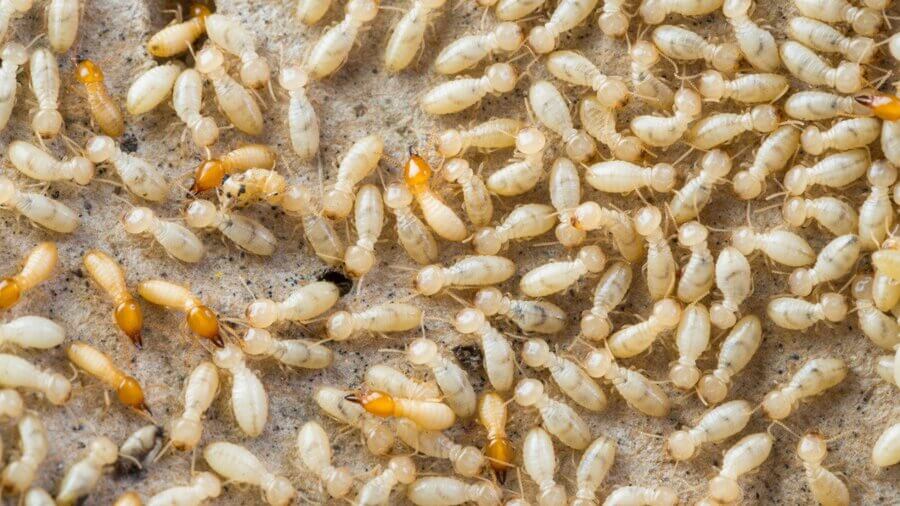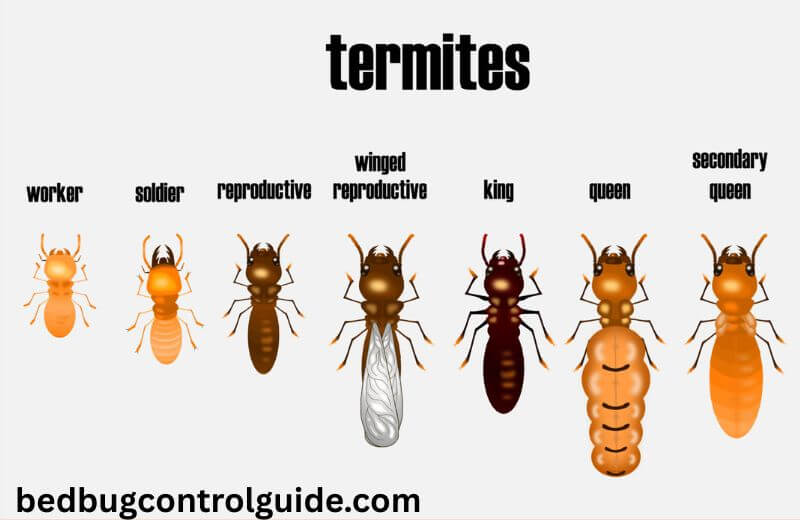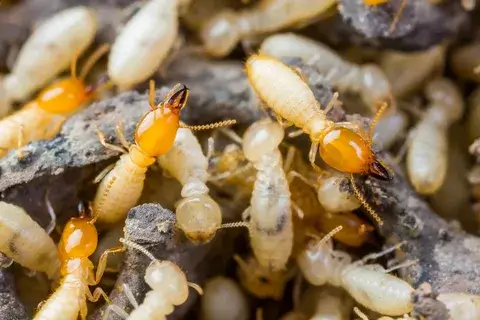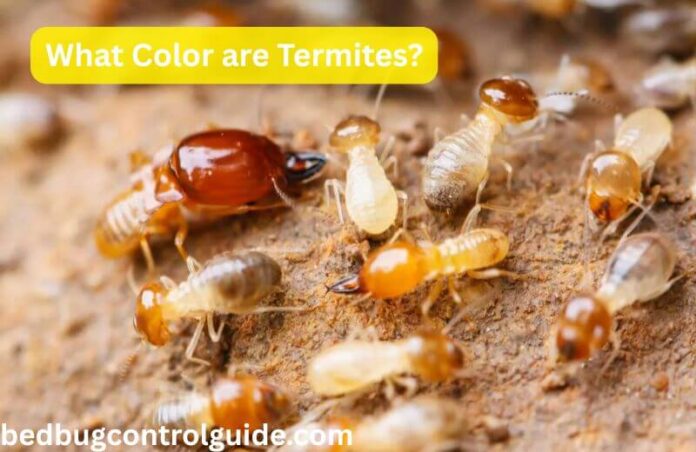Termites might be small, but they can cause big problems for homes. Knowing what color are termites and understanding their types is a vital step in identifying them early. Different termites have unique colors, depending on their species and roles within the colony. These colors can help homeowners figure out what kind of termite they’re dealing with, and take the right actions to protect their homes.
What Colors Are Termites?

Termites can be pale white, cream, brown, black, or even reddish. Their colors often depend on their role, also known as their “caste,” in a colony. Here’s a simple breakdown by caste:
Worker Termites
- What they do: These termites are in charge of finding food and taking care of the young.
- What they look like: Workers are the most commonly seen and are pale white, cream, or light tan in color.
Soldier Termites
- What they do: Soldiers protect the colony from threats like ants.
- What they look like: They have light-colored bodies but darker or orange-colored heads, which are large and usually equipped with strong mandibles for defense.
Swarmers (Alates)
- What they do: These are the flying termites that leave the group to start new colonies.
- What they look like: Swarmers are usually darker, ranging from dark brown to black. Some can be yellowish-brown depending on the species.
Colors can also vary based on termite species. Here are common termite species and how they look:
Subterranean Termites
- Workers are creamy white. Soldiers have light bodies and darker heads. Swarmers are dark brown or black.
Drywood Termites
- Usually yellow-brown with transparent or gray-tipped wings.
Dampwood Termites
- These are often reddish-brown and larger than other types of termites.
Formosan Termites
- Workers are pale white, while soldiers have yellowish-brown heads. Their wings can also look slightly hairy under close observation.
Types of Termites and Their Characteristics

There are four major types of termites that homeowners should know about. Each type behaves differently, and knowing their traits can help in identifying them in your home.
1. Subterranean Termites
- Where they live: These termites build nests underground and use mud tubes to travel.
- Color: Workers are creamy-white, while soldiers are light-bodied with dark heads. Swarmers are dark brown or black.
- Unique feature: They cause the most structural damage because of their huge colonies and constant search for food.
2. Drywood Termites
- Where they live: They inhabit dry wood, often found in furniture or wood fixtures.
- Color: Golden brown or yellow-brown. Their wings range from clear to gray.
- Unique feature: Unlike other termites, they don’t need soil to survive.
3. Dampwood Termites
- Where they live: These termites prefer wood that has high moisture, like logs or areas with water damage.
- Color: Reddish-brown or light brown.
- Unique feature: Their size is larger than other termite types.
4. Formosan Termites
- Where they live: Found mostly in warm, humid areas like the southern United States.
- Color: Workers are white, soldiers have amber heads, and swarmers are yellowish-brown.
- Unique feature: They can form massive colonies and cause very fast damage.
Read Our Latest Guides on Termites:
- Tiny Baby Termites? Everything You Need to Know in 2025
- What Do Baby Termites Look Like? Termite Identification and Treatment in 2025
- Baby Termites vs Ants? How to Tell the Difference
Why Identifying Termites is Important

Knowing what termites look like and understanding what color are termites is essential for protecting your home. Whether you are spotting their creamy-white workers or dark swarmers, these details can help you identify and manage a potential infestation early. Being informed can save you time and reduce damages to your property. Follow Us on Facebook for the latest updates.
FAQs
What are the three types of termites?
The three main types are subterranean termites, drywood termites, and dampwood termites.
What are the worst types of termites?
Subterranean termites, especially Formosan termites, are considered the most destructive because of their large colonies and rapid eating habits.
Are black termites bad?
Black termites are likely swarmers. While they don’t eat wood, their presence indicates an existing termite infestation nearby, which is a problem.
What is the difference between drywood termites and dampwood termites?
Drywood termites live in dry, hardwood, while dampwood termites live in moist wood. Dampwood termites are larger but less common in homes.
Can drywood termites harm humans?
No, drywood termites don’t harm humans directly. However, they can cause significant damage to homes and furniture.
How to identify dampwood termites?
Look for larger termites with reddish-brown bodies. They are often found in damp, rotting wood.
What attracts dampwood termites?
They are drawn to wood that has a lot of moisture. Leaky pipes or water damage can create the perfect environment for them.
How to identify termites at home?
You might see discarded wings, mud tubes along walls, or hollow-sounding wood. Swarmers are another sign of an infestation.
How to get rid of dampwood termites?
Fix moisture problems first. Then call a pest control professional for treatment.
Are termites always white?
No, termites can be white, cream, tan, dark brown, or black, depending on their type and caste.
Are termites purple?
No, termites are not purple. If you see a purple insect, it’s likely something else.
What do common termites look like?
They are small, soft-bodied insects. Most termites are pale, but swarmers can be dark brown or black.
What bug can be mistaken for termites?
Ants, especially flying ants, are commonly mistaken for termites. Look at their antennae (termites have straight ones) and body shape (ants have pinched waists).
Do termites bite people?
No, termites don’t bite people. They only chew on wood.
Why do termites suddenly appear?
Termites swarm when they’re looking to start new colonies. This usually happens during warm seasons.



